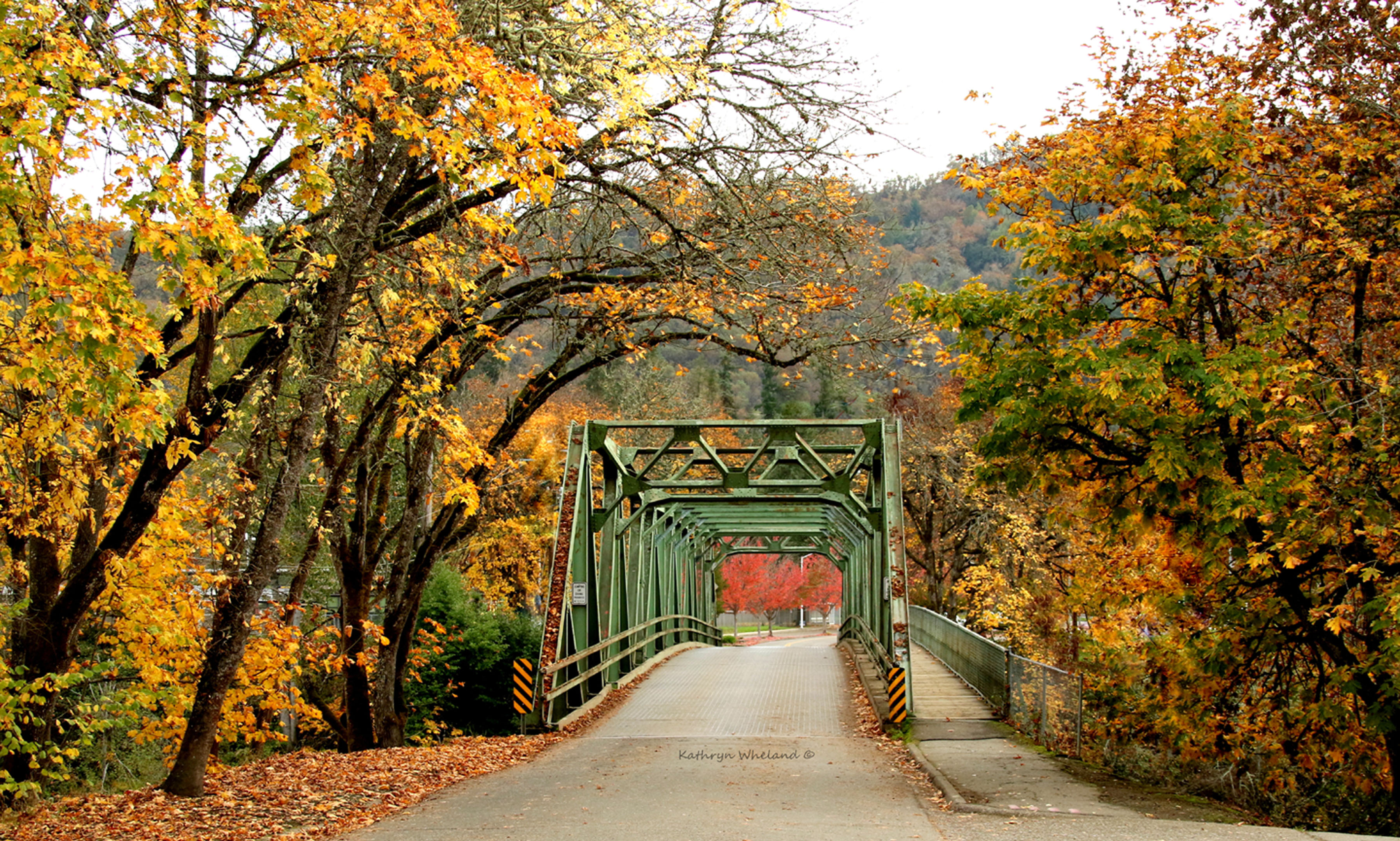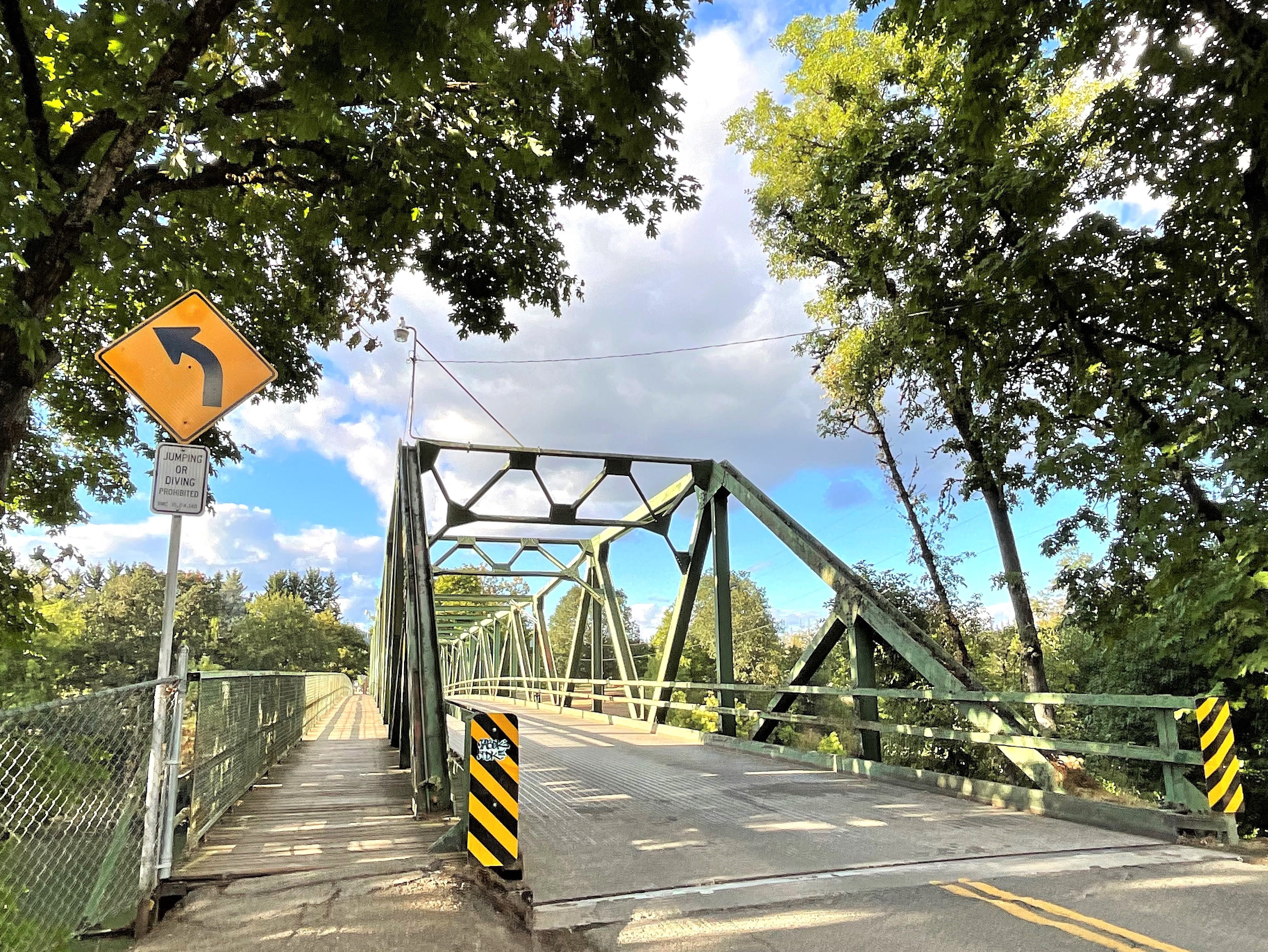Press Releases
Historic bridge rehabilitation to begin
 Photo by Kathryn Wheland Photo by Kathryn Wheland
|
ROSEBURG, OR – Historic Stewart Park Drive Bridge will soon close to vehicles to undergo significant rehabilitation that will extend its useful life and allow use by modern fire trucks.
The Great Depression-era steel truss bridge known to Roseburg residents as the “Green Bridge” will close to vehicle traffic over the South Umpqua River starting Monday, Feb. 10, and remain closed until Monday, Nov. 3.
The structure is one of the smallest steel truss cantilever bridges in the country. The $6,321,890 rehabilitation project will be paid primarily with federal funds from the Oregon Department of Transportation’s Local Bridge Program. The City will match 10.27% -- paying $649,258 from the City’s transportation fund.
A pedestrian and bicycle tunnel will be left open throughout the project, but the entire bridge will be contained in a wrap to keep lead-based paint from contaminating the river. In addition, all existing paint – including top layers of green paint -- will be removed and the bridge’s color will be restored to its original black.
Drivers can access the south entrance of the Roseburg VA Medical Center from Stewart Parkway, traveling through Stewart Park to the VA facility’s entrance just north of the bridge. To protect bridge workers, please use caution when traveling near the work zone. Turning around at either end of the bridge will be very difficult.
After the project’s completion, the bridge will be load-rated to allow passage of single-rear-axle fire trucks, which weigh about 43,000 pounds or 21.5 tons, and short-haul vehicles/commercial delivery trucks. The bridge’s load capacity will increase from the current 12 tons, or 24,000 pounds. Single-rear-axle fire trucks currently have to access Stewart Park or Veterans Health Administration buildings via Stewart Parkway or the north entrance to the VA campus, rather than using the bridge. Heavier ladder trucks weighing 39 tons, or 78,000 pounds, have never used the bridge.
The renovation project will include truss strengthening, sealing the existing concrete deck and joint ends, reconstructing substandard sidewalk, replacing sidewalk decking and substandard handrails, installing universally accessible sidewalk ramps on both sides of the bridge, removing and replacing existing paint, strengthening pin and hanger connections, installing new sidewalk lighting, and prepping and repainting the surface.
The project will upgrade the bridge structure to address existing conditions by strengthening selected truss chord members, replacing damaged upper lateral bracing members and improving accessibility. Existing pedestrian walkway supports will be repaired with new gusset plates at the handrail.
The current wooden walkway will be replaced with plastic lumber decking. The walkway handrail design will change from a metal-mesh screen to a simpler design with top and bottom rails and closely spaced vertical uprights or “balusters.” In addition, two non-original, sodium-vapor light fixtures that produce weak lighting at both ends of the bridge are being replaced with four antique-style, “gooseneck” lanterns or luminaires mounted on vertical piers.
“All original exterior materials and details shall be preserved to the maximum extent possible,” according to a Roseburg Historic Resource Review Commission agenda item report.
The bridge is owned by the City but located over state lands in the South Umpqua River, and is considered part of the Roseburg Veterans Administration Hospital Historic District. The river and both ends of the bridge are located within the Floodplain, Roseburg VA Hospital Historic District and Riparian Habitat Protection overlays, which means additional zoning standards must be met. Federally funded projects must be reviewed by the State Historic Preservation Office to ensure the project meets state/federal preservation standards.
The 327-foot bridge was constructed in 1932 and 1933 as part of the VA Campus. The bridge was built to connect the former Oregon State Soldiers Home – now leased by Umpqua Valley Arts – and cemetery property on the south side of the river with what were then new veterans’ facilities on the north side of the river, and is believed to have been designed by the Construction Service of the VA, according to the agenda item report.
Due to the bridge being both functionally obsolete and structurally deficient, the City originally asked the state in 2015 to completely replace the bridge. ODOT staff said then they would not support replacement, but would support rehabilitation. The City won a rehabilitation grant through ODOT’s Local Bridge Program in 2019.
Stewart Park Drive Bridge is considered unusual and is notably one of the smallest steel truss cantilever bridges in the United States. The bridge was included as a “contributing structure” when the Roseburg Veterans Administration applied to register as a historic district. To meet state and federal historic preservation standards, the State Historic Preservation Office requested the bridge be repainted its original black color.
City Manager Nikki Messenger and then-Public Works Director Dawn Easley communicated to the state that City staff and the Roseburg City Council preferred for the bridge to remain green. However, the City chose not to insist on the green color because that could have delayed repairs or risked losing the funding altogether.
For more information, contact the Public Works Department by calling 541-492-6730 or emailing pwd@roseburgor.gov.

Posted by RoseburgAdmin